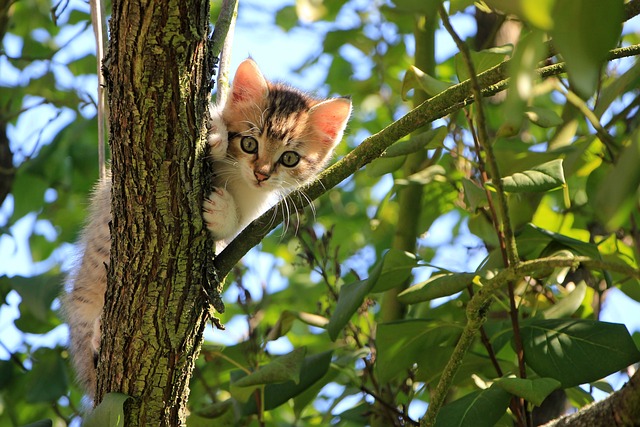
Litter training is an essential aspect of caring for your feline friend. It not only ensures a clean home environment but also contributes to the overall well-being of your cat. While some cats may take to the litter box naturally, others need a bit of guidance. This article will provide you with comprehensive steps and tips to master litter training, making the process smooth and effective for both you and your cat.
Understanding Your Cat’s Natural Instincts
Cats have a natural instinct to bury their waste, which stems from their wild ancestors who did so to avoid detection by predators. This instinct is beneficial when litter training, as it makes cats more inclined to use a litter box. However, understanding and working with these instincts can help address any challenges that may arise during the training process.
Choosing the Right Litter Box
The first step in successful litter training is selecting the appropriate litter box. Consider the following factors:
- Size: The box should be large enough for your cat to move around comfortably. A general rule is to choose a box that is one and a half times the length of your cat from nose to base of tail.
- Height: For kittens or older cats with mobility issues, a box with lower sides is preferable to ensure easy access.
- Covered vs. Uncovered: Some cats prefer the privacy of a covered box, while others may feel confined. Observe your cat’s behavior to determine their preference.
Selecting the Appropriate Litter
Litter selection is crucial and can impact your cat’s acceptance of the litter box. Here are some considerations:
- Material: Common types include clumping clay, silica gel, biodegradable, and non-clumping clay. Clumping clay is popular for its ease of cleaning.
- Texture: Most cats prefer a fine, sand-like texture that is gentle on their paws.
- Scent: While scented litters can mask odors, some cats may be deterred by strong fragrances. Unscented options are often safer.
Placement of the Litter Box
The location of the litter box can significantly affect your cat’s willingness to use it. Follow these guidelines for optimal placement:
- Quiet and Private: Place the box in a quiet area away from high-traffic zones and noisy appliances. Cats appreciate privacy when doing their business.
- Accessible: Ensure the box is easily accessible at all times. Avoid placing it in areas that require your cat to navigate obstacles.
- Separate from Food and Water: Cats do not like to eliminate near their eating area, so maintain a good distance between litter boxes and feeding stations.
Introducing Your Cat to the Litter Box
Introducing your cat to the litter box is a crucial step in training. Here’s how to do it effectively:
- Show the Box: Gently place your cat in the litter box after meals and naps to familiarize them with its presence.
- Minimize Stress: Ensure a calm environment to prevent stress, which can deter litter box use.
- Encourage Exploration: Allow your cat to sniff and explore the box at their own pace without forcing them.
Establishing a Routine
Cats thrive on routine, so establishing consistent litter box habits is beneficial:
- Regular Placement: Place your cat in the litter box at regular intervals, especially after meals and sleep.
- Positive Reinforcement: Praise and reward your cat with treats or affection when they use the box correctly.
- Monitor Usage: Keep an eye on frequency and consistency to identify any issues early on.
Troubleshooting Common Litter Training Issues
Even with the best efforts, issues can arise. Here’s how to troubleshoot common problems:
- Inconsistent Use: If your cat occasionally misses the box, ensure it is clean and accessible. Stress or changes in environment can also be factors.
- Avoidance: If your cat refuses the box, try changing the litter type or box location. A veterinary check-up may be necessary to rule out health issues.
- Marking Behavior: Unneutered cats might spray to mark territory. Spaying or neutering often resolves this behavior.
Maintaining Cleanliness
Maintaining a clean litter box is crucial for encouraging consistent use:
- Daily Scooping: Remove waste at least once a day to prevent odors and ensure cleanliness.
- Regular Replacement: Change the litter completely every 1-2 weeks, depending on the type and number of cats.
- Box Cleaning: Wash the box with mild detergent and water during litter changes to prevent bacteria buildup.
When to Seek Veterinary Advice
If your cat consistently avoids the litter box or exhibits unusual elimination behavior, it’s important to consult a veterinarian. Potential medical issues such as urinary tract infections, bladder stones, or stress-related conditions may be the cause.
Conclusion
Litter training your cat requires patience, understanding, and consistency. By choosing the right litter box and litter, placing it optimally, establishing a routine, and maintaining cleanliness, you can ensure a successful training experience. Remember, each cat is unique, so be attentive to their preferences and needs. With these steps, you’re well on your way to mastering litter training and keeping your home clean and your feline friend happy.
#ChatGPT assisted in the creation of this article.








